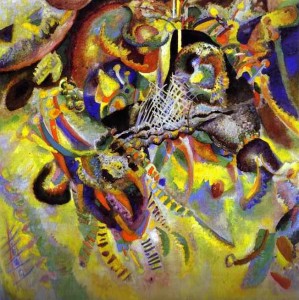The Utility as a concept is hot. Many visionaries predict “something” will be sold and consumed like “Water, Gas or Electricity”. It will flow through the Internet directly into our User-Interface (Mobile Phone, Television, ..) and we will pay a “flat fee” for every thing.
Like all “hot issues”, hypes and trends there is something wrong and something right. Finding out “what’s wrong” gives us an idea about the reality of the vision.
I want to concentrate this blog on the future of Music or Music 2.0, a free downloadable book of visionair Gerd Leonard. In his book he has formulated eight trends.
1. Music Like Water: Music is no longer a product but a service. Music became a product with the advent of recording (records, tapes, CDs) and the formation of an industry that quickly figured out that selling the bottle can make a lot more money than only selling the wine. For the future, think of a “record label” as a “music utility company.”
2. A Bigger Pie, but Cheaper Slices: Today’s music pricing schemes will be completely eroded by digital music services (legal and, mostly, otherwise) and by stiff competition from other entertainment products. A “liquid” pricing system will emerge, involving subscriptions, bundles of various content types, multi-channel/multi-access charges, and countless added-value services.
3. Diverse and Ubiquitous: A wide range of music will be everywhere, and music will be part of everything that used to be “images only”: from rich media advertising to interactive slideshows to car software to MMS and digital cameras, to advertising in magazines (!), the audiovisual use of music will soar, and the licensing revenues will explode along with it.
4. Access to Music will Replace Ownership: Soon, consumers will have access to “their” music anytime, anywhere, and the physical possession of it will in fact be more of a handicap, or a knack of collectors. Music will feel (and act) like water.
5. Multi-point Access to Music will be the Default Environment, allowing consumers to fill up their music devices at airports, train stations, and in coffee shops and bars, using all kinds of wireless connections as well as other on-demand and ad-hoc networking technologies.
6. Go Direct: Major artists will increasingly rely on their own “brandability” and – via their managers – go direct to the consumers, using their own in-house marketing, branding, and promotion teams.
7. The Software Pro: The (performing) rights organizations (PROs) as we know them will likely fade away. Complete technology solutions comprised of watermarking and fingerprinting, so-called DRM and (better) CRM components, monitoring, admin/accounting, and instant payment solutions will do the job quicker, cheaper, and, of course, with complete transparency.
8. Mobile Mania: Cell phones and other wireless devices will eventually utilize and suck up more “content” than any Internet service or P2P client ever has. Real-music ringtone offerings, Multi-Media SMS (MMS), Java-based games, wireless streaming audio and video, i-Mode type applications, and other cell-phone based offerings will proliferate very quickly, at first in Europe and Asia, followed by the U.S.
What wrong with his predictions?
His vision is based on the fact that we are able to digitize something (music) and transport this something through a pipeline (a broadband network) and re-digitize it with a specialized device.
The first thing that is special in his vision is that there is really nothing that relates to Music.
It is applicable to Anything that is Digitizable. Let’s call them Dthings. Dthings are the Inputs for our Senses. The Dthing-model is a highly used model. It supposes that the Human Being is a Computer (or perhaps better a Robot).
What everybody forgets are aspects of Human Beings like Emotions, Imagination and Context. These aspects have to be balanced. Emotions (or Mood, Taste) play a special role in Music. Music triggers the Emotional part of the Human. The emotions are highly context-dependent. Classical Music in a Beat Environment doesn’t fit.
Music is not confined to the Ears. The whole body is capable of listening. An Ear-plug gives only a part of the sensation music can give you.
Does an extended model of the Human Being prohibit something in the Vision of Gerd Leonard?
Yes and No.
It must be possible to expand the Devices into a complete Music-environment (A Digital Theatre). Digital Theatres are already on the market. It will only block his 8th part of his vision, Mobile Mania.
Digital Theatres are unable to replace a Real Performance of an Artist. In a real performance not only the music, the musicians and the environment but also the public plays an important role. The right combination of all of them generates Spirit (Enthusiasm). The need to experience the “real thing” will rise when “Music as Water” will be available.
The next thing that will cause a lot of trouble is Indexing. It will be impossible to categorize all the Dthings in the Musical Jukebox Leonard will create. Even worse, indexing will start the “Google-effect”. Artist (or their representing companies) will have to pay to get attention.
Is there something “on the market” that will replace “Music like Water”?
Yes.
Let’s call it “Instant Mood”.
Many people take drugs (Alcohol, Pills) to enhance the Experience of Music.
The connection between the device and the body will be improved. In the end there will be a direct connection between the brain and the outside. People will take a simple neural plug-in that will connect them to a Mood-Simulator.
If people want to Get into a Mood why will they need Music if the connector is able to generate every mood they want?
This development is called Mind Control and Mind Control is “On Its Way”. It is already used in the Army and it will find its way into business soon.
Many problems I have mentioned are gone. We don’t need Artists anymore. The Amount of Choice will reduce dramatically so a Classification System is not needed.
Instant Mood will really Flow like the Waves of Emotion.
There is only one little problem.
Mind Control can be used to manipulate Every Body into Every State. So if Instant Mood is operational we have to Prevent this to Happen.
Imagine.
Every body will be Happy all the Time.
We are finally in Paradise.
 In 1999 John Gage wrote the book Color and Culture, Practice and Meaning from Antiquity to Abstraction. The book explains the way people “think/sense” about Color in History.
In 1999 John Gage wrote the book Color and Culture, Practice and Meaning from Antiquity to Abstraction. The book explains the way people “think/sense” about Color in History. A very remarkable researcher who has discovered many phenomena is the Dutch
A very remarkable researcher who has discovered many phenomena is the Dutch  Before that time Color was a Field. Colors (and Images) were created by adding Layers.
Before that time Color was a Field. Colors (and Images) were created by adding Layers. When you want to do a very simple experiment just do what Goethe did. He wrote a book called Color Theory that contains all his experiments. Goethe used the German word “
When you want to do a very simple experiment just do what Goethe did. He wrote a book called Color Theory that contains all his experiments. Goethe used the German word “ The
The 